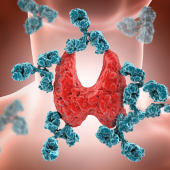In our second edition of the Women’s Health Masterclass, we cover how to find the “sweet spot” in clinical decision making. Our panel includes Dr Tori Hudson, ND who has been in practice for 38 years. Dr Hudson is Medical Director of ‘A Woman's Time’ Clinic in Portland, and is the Founder and Co-Director of the Naturopathic Education and Research Consortium, a non-profit organization for accredited naturopathic residencies.
Dr Tori is joined by Dr Lise Alschuler, ND, FABNO who is a professor of clinical medicine and is the Assistant Director of the Fellowship in Integrative Medicine at the Andrew Weil Center for Integrative Medicine. Also on the panel is Dr Jaclyn Chasse, ND who is a clinician, writer, speaker and naturopathic activist. Rounding out the group is Dr Jodie Peacock, ND a naturopathic physician and educator whose book Preconceived is a guide to enhancing fertility in both men and women.
Nutramedica host E Brian Johnson spoke to the panelists from our studio in Vancouver, British Columbia.
Key Take-Aways
DO NO HARM
Principles of naturopathic medicine
Naturopathic physicians should always choose the most non-invasive and least toxic treatments necessary for each patient, with a special focus on the healing power of nature. Naturopaths heal “the whole person” which constitutes an underlying principle of practice.
Inclusivity of treatment approaches
As integrative medicine continues to evolve, we must be mindful to focus on the fundamentals of our healing tradition: listening, observation and recording a thorough history of our patient’s health history. It’s easy to be seduced by new protocols, testing and technology, which all have their place, but not at the expense of fundamentals.
“Do No Harm”
Do no harm is to avoid exposure of patients to additional risks through either actions or inactions. Do no harm includes overtreatment as well as undertreatment; overtesting as well as undertesting.
This means taking a step back from an intervention to look at the broader context and mitigate potential negative effects on the patient, but also potential negative effects on the social fabric, the economy, and the environment.
TESTING: FINDING THE SWEET SPOT
Over Testing vs Under Testing
Over testing can lead to inaccurate diagnoses, inappropriate treatments and further unneeded tests, while under testing can result in missed opportunities to accurately understand the cause of illness and the diagnosis of current problems with further costs down the line. These create unnecessary direct expenses for the health-care system, while also costing patients time and increasing their stress.
It takes experience to find the sweet spot. For example, if a patient is going through chemotherapy where they are experiencing symptoms of fatigue, it’s easy to assume this is a side effect, but if they are not being evaluated properly for anemia or hypothyroidism or maybe even liver disease, the physician may miss underlying problems.
Good investigative questioning and a comprehensive history continue to be of utmost importance. If a patient fails to improve after a recommended treatment, further testing is required.
Are test results up-to-date?
Some standard tests have been upgraded and their results re-evaluated over time. For example, the panel on BRCA testing has expanded in the last five years to include genetic panels of many genes. For genetic testing, it is vital to use the very latest data and newest forms of the test.
Subjective approaches to diagnosis
Beyond clinical algorithms and standard testing and treatment guidelines, a practitioner must rely on their healing instinct. The confidence to “go with your gut” is acquired with experience. This ability to sense what is required comes from careful evaluation of your patient's story and behavior. Testing should be used to validate your instinct.
Menopausal hormone therapy testing
In regards to hormone therapy, it's important to remember that systemic hormone delivery affects the whole body. Therefore, be mindful that there are more risks associated with starting menopausal hormone therapy after age 60 or 10 years or more after menopause begins. In other words, the optimal window for starting hormone therapy is before age 60 or within the first 10 years of their last menstrual period.
This rule of thumb does not apply to topical/local hormone therapy such as intravaginal estrogen or vulvar estrogen that is given in low dose and typically only 1-3 times per week.
Testing PCOS patients
Polycystic ovary syndrome (PCOS) is a condition in which the ovaries produce an abnormal amount of androgens and a mechanism of insulin resistance.
PCOS patients are usually not re-evaluated for androgens after they are initially diagnosed but monitoring glucose, A1c and lipids is especially important in those overweight and obese PCOS patients. Conventional practitioners often prescribe birth control pills and/or metformin and sent on their way. Naturopathic and integrative practitioners discuss risks associated with PCOS including T2DM, gestational diabetes, cardiovascular disease and endometrial cancer… and in addition, use several evidence based natural therapies to address the core issues of hyperandrogenism and insulin resistance, with the goal being regular ovulation, symptom management and disease prevention. Hormone testing per se, is usually not required or useful, other than the initial androgen testing.
Premenstrual Syndrome testing
There is no hormone testing necessary to diagnose or to treat PMS or PMDD. You can have PMS if your estrogen levels are high or low or normal, and this is the same for progesterone levels.
Testing is not relevant to the diagnosis, nor really relevant to the treatment. Instead, looking at neurotransmitter levels would be more instructive.
Testing in breast cancer patients
If your patient has early stage breast cancer, it's important to do more than standard reference lab tests. Practitioners should investigate biomarkers of the tumor microenvironment.
In addition to CMP, lipid profiles, CBC, transforming growth factor beta and IL 6 levels, it may be prudent to do a natural “killer cell” ratio test.
Now if somebody is metastatic, it is important to run those tests because they will determine the effectiveness of your interventions.
Tests using metabolite ratios in breast cancer patients
Tests that reveal the ratios of key metabolites are more informative and more useful than those that reveal the metabolite level alone.
The neutrophil to lymphocyte, albumin to globulin, albumin to creatinine, or cholesterol to HDL-C ratios are examples of ratios that will inform your interventions.
Estrone to estrone sulfate is another good ratio.
However, once a patient has been diagnosed with breast cancer, estrogen metabolite ratios do not tell us anything useful, particularly when measured in urine.
Testing as part of a fertility assessment
If a patient is trying to get pregnant, do not think about it as an “infertility” case. Rather, approach it from the perspective of “preconception”. It’s not necessary to conduct hormonal testing, evaluation of ovarian reserve, or semen analysis until we do in fact suspect infertility. However, a thorough “Woman Wellness” exam can be valuable.
If after a year of trying to get pregnant without success, it may be appropriate to change your approach.
Optimal time to test a woman’s hormones in her cycle
Generally, with fertility you want to conduct two evaluations in the cycle. One of them is on cycle day three, which is considered a baseline time for hormonal testing, and the other is seven days after ovulation.
Classically, that is day twenty-one. Day 3 is the best time to test FSH, LH and estradiol. Seven days after ovulation is the best time to test progesterone. AMH can be checked at any time.
Is vaginal and rectal microbiome testing useful?
Vaginal and rectal microbiome tests are evolving. Science now allows us to identify “good” and “bad” microbes and their correct ratios. While these tests are in their early stages, there is may be merit in using them as science evolves but for right now, as of July 2022, we don’t recommend them.
Chronic insomnia cases
Many cases of insomnia are difficult to diagnose. Testing salivary cortisol curves and thyroid hormones are often useful in establishing cause. However, urinary neurotransmitter tests can be highly instructive in arriving at underlying causes related to brain chemistry and sleep cycles. Melatonin testing may also be helpful. Urinary neurotransmitter tests also appear useful for major depressive disorder or anxiety disorders as well as OCD.
Menstrual migraine mitigation
Hormone tests are not necessary with diagnosis of menstrual migraine. We know that pure menstrual migraines result from a change in estrogen which influences platelet aggregation, serotonin glitches, vascular instability, 5-HT receptor problems to name some well known mechanisms.
While we don’t need to test for estrogen, estrogen patches can be the medicine that helps mitigate menstrual migraines. One typical method if the migraines are in the week before or during mesnes is to apply an estrogen patch on day twenty-one and leave it on for seven days.
Summary remarks on testing
With tests coming into the market every day, it's easy to feel overwhelmed. Take a breath! You are enough, you know enough. Testing is there to support your healing mission, not the other way round!
Always consider the cost implications of testing; avoid wasting the patient’s time and money. Use tests with discretion and intention. Do not use tests because they are trending or you are not sure of what you are doing. If you are not sure about something, seek advice.
If you are in a position where you are not sure, or if you do not have a clear path to diagnosis, reach out to a colleague to help you get there. The next time you are in that situation, you will be in a much better position to help your patients.
Key Quotes
“Be impeccable with your word. “ “ Don't take anything personally.” “ Do not make assumptions” and “ always do your best.” Those “four agreements” should be helpful in finding the sweet spot in your clinical testing and patient management.” Dr Tori Hudson, ND
“I still think back to what I learned in naturopathic school, which is 85% of your clinical decision making you can get from patient history and physical exam. So lab testing is that extra 15%.“ Dr Jaclyn Chasse, ND
“This idea that we throw all these tests on people as a first step and then move forward with our assessment is backwards.” Dr Lise Alschuler, ND FABNO
“Empowering the patient plays into their own intuition. How many times have we had patients come in and tell you “I know something is wrong”. They know there's something there and inevitably I find it.” Dr Jodie Peacock, ND
==
The opinions expressed in this Nutramedica program are those of the guests and contributors. They do not necessarily reflect the opinions of Nutritional Fundamentals For Health Inc.
This video is intended for licensed or registered health professionals and students of health professions only. These statements have not been evaluated by the Food and Drug Administration. Information contained in these programs are not intended to diagnose, treat, cure or prevent any disease.



